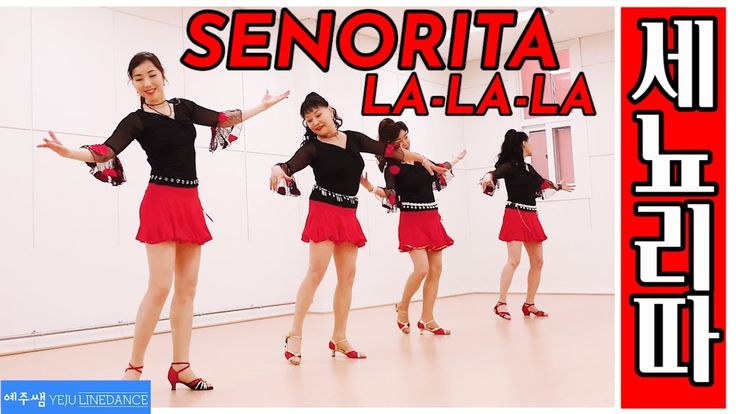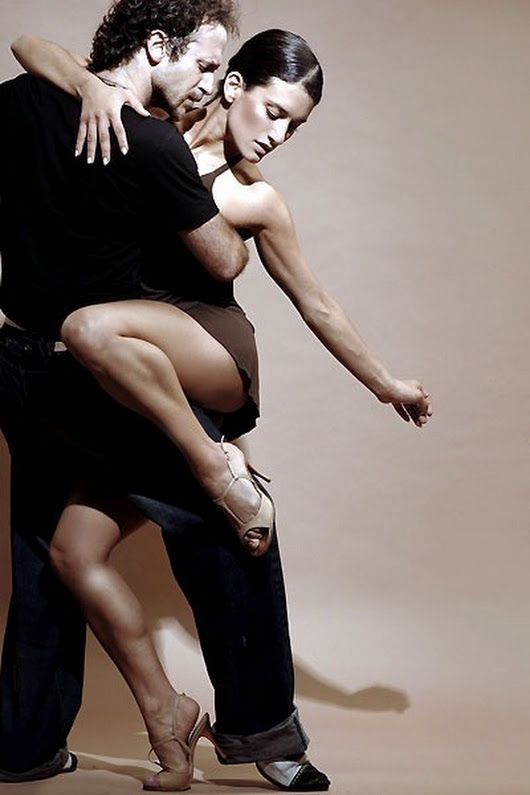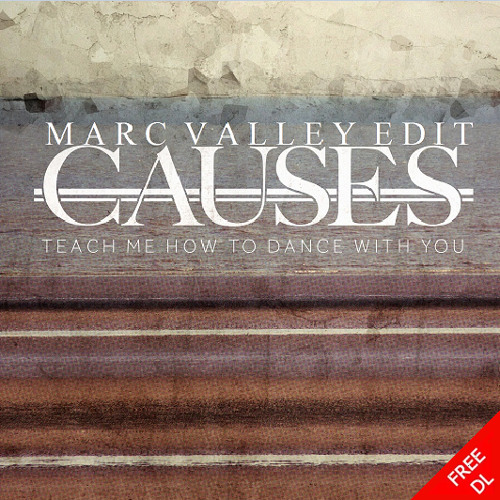How to dance zouk love
5 basic steps of ZOUK for beginners
If you've come this far it's because you want to know how to dance zouk and above all because you want to learn some steps of initiation to start dancing Zouk, right?
In fact, Zouk is one of the dance styles that is gaining popularity and more and more schools are offering zouk classes and lambazouk classes and places where you can go to dance to this sensual and characteristic music.
The style of music originated in the French Antilles and was opened to the public in the 1980s. However, to date it has already reached different parts of the world and is usually danced in most European countries.
If you are a lover of sensual music and you dare to discover yourself with a new style of dance the Zouk is for you!
In this post we are going to show you 5 basic steps to start dancing Zouk (although they are not the only ones) but they will help you to get a good base.
You ready to go?
Image Source Berg Chabot
But first.
In case you didn't know, the Zouk is a dance style that has 3 rhythms and is danced in pairs. It is characterized by its smooth, very sensual movements, and stands out for the twists and turns of the girl's head.
As in all couples' dances, the man is the one who guides the woman in her movements, and she simply has to let herself go and flow through the music.
However, as it is already very common nowadays, and there is no rule that determines who dances with whom, any combination of couples can be observed on the dance floor. Women carrying women, men carrying men with men and vice versa. The point is to be able to dance and enjoy!
Step 1 - Basic Zouk step
The basic step of the Zouk has a rhythm of 3 steps that can be danced in the 1 or 3. The first step is the main and the most prominent, and the two prominent steps are marked in small.
The man will always mark the step forward and the woman will always mark the step back and vice versa.
It is very important to have a clear rhythm and to integrate it. When you start to dance a style it is always recommended to do the foot counts, however, we also recommend to feel the music to combine it with the basic steps, so that it is not so automated and is more fluid.
Step 2 – "El Corredor"This step allows us to combine the basic Zouk step with another combination of movements to change the position with our partner.
It is very important to stay well connected with the couple, especially holding hands to notice how the guide sets the pace.
The steps of the corridor feet are: open, position and cross, and so on from right to left.
You dare to try it?
Below is a video explaining the steps very clearly. The easiest way to learn is by practicing!
Step 3 – Turning with setbacksThis step would be a combination of the runner's step and the turn, which is why it is called a twist with a setback. However, this step is a little more complete as the woman can also put the detail of the head.
However, this step is a little more complete as the woman can also put the detail of the head.
The count is always the same, 1, 2 and 3 are marked side to side. To combine this step, first mark the basic step and in the second count the woman turns. Keep in mind that you also have to put in the detail of the head, so you have to learn it step by step.
I start the feet with the turn and the figure of the bodies, and once these steps are assimilated add the head movement, which gives it an incredible touch.
Watch the video below to practice it with your partner!
Step 4 – Zouk ripplesIn the Zouk dance it is very important to know how to make waves as they are used very often during the dance. Besides giving it a very sensual touch.
Did you know that the best way to learn to make waves is with the wall or with a mirror?
And if! It may sound a little weird, but if you look at the video we've shared below, it's the best way to do it.
Waves can be made in two ways, starting at the top (head) or from the bottom of the body (knees).
If we start the wave from the head, the key is to take out each part of the body naturally and in a chained way (head, neck, shoulders, back, pelvis, legs, knees) and until we reach the end. If the wave starts from the bottom it's the same but the other way around.
So, you know, start practicing the waves at home so that they come out more fluidly little by little!
As you can see in the video in pairs, the two dancers make the wave and their bodies collide with each other forming an asymmetrical wave visually. A very nice effect visually and fun to run once you master it.
Tutorial on how to make waves
Remember to activate the subtitles in your language.
Zouk waves in pairs
Remember to activate the subtitles in your language.
Step 5 - Head movement
Finally, we would like to highlight the head technique (especially for women), as it is performed continuously during the Zouk dance.
The movement of the head has to be practiced little by little so that it is done in a natural way.
Message for the girls: be very careful with the head movements, and above all do some good stretches before dancing Zouk. We don't want anyone to get hurt!
Now you know, if you're looking for a very sensual dance style like Bachata, Salsa or Tango, Zouk is your style.
Dare to dance the dance style that is slowly gaining popularity in dance schools and in the ballrooms.
What are you waiting for when you find the nearest zouk school in your area and start dancing.
Feel free to share your first experience dancing Zouk with us. We'd love to hear from you!
We'd love to hear from you!
What made you want to learn to zouk?
Tell us the reason in the comments, we'd love to hear your story. Thank you! Thank you!
Zouk Dancing - Etsy.de
Etsy is no longer supporting older versions of your web browser in order to ensure that user data remains secure. Please update to the latest version.
Take full advantage of our site features by enabling JavaScript.
Find something memorable, join a community doing good.
(49 relevant results)
Dance Zuk (Zouk)
Zuk is a dance of different styles, closely related to the music of the same name, but differing in performance depending on the place of its distribution.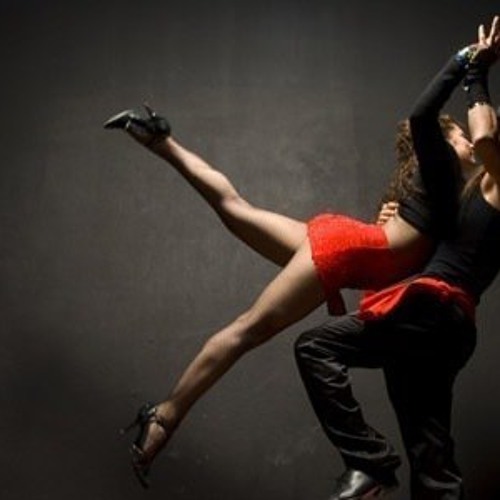 Zouk is a romantic dance that combines: love, passion, tenderness, sensuality. It captures your emotions, slowly drags you into a whirlpool of feelings and drives you crazy. The dance attracts not only the soul of the partners, but also the enthusiastic glances of the audience.
Zouk is a romantic dance that combines: love, passion, tenderness, sensuality. It captures your emotions, slowly drags you into a whirlpool of feelings and drives you crazy. The dance attracts not only the soul of the partners, but also the enthusiastic glances of the audience.
" Party ", " festival " - this is how the word "zouk" is translated from the French Creole language.
The zouk became famous and popular in the 1980s after it was used in theatrical performances that amazed audiences with new music, spectacular dance elements and colorful costumes. From that moment, the zouk began its march around the world.
The history of the Zuk dance
The Zuk dance is relatively young. Late 20th century groups Grammacks and Exile One popularized rhythmic dance music common in the French islands Guadeloupe , Haiti , Martinique .
The zouk style began to spread actively in Europe, especially in France, and also in North America.
Due to the fact that the performance of zouk was influenced by many different cultures, four distinct styles gradually developed:
- zouk-love (Haitian and French Caribbean)
- lambazouk (Brazilian style folded lambada)
- kizomba (common in Angola and Cape Verde)
- soulzouk (Introduced in China in 2005 with a Brazilian variant mixed with other contemporary genres).
Zouk continues to develop at the present time, evidence of this is the emergence of a new direction - Zouk Revolution .
Types of zouk dance and their features
Features of this dance are determined by its style.
This type is one of the leading styles in which the dance is performed to lyrical and dramatic songs about love and parting. The pace of execution is slow.
The pace of execution is slow.
The origin of this style is associated with songs performed by Ophelia Mary , a singer from Dominican Republic .
Zouk-love is somewhat similar to the traditional Caribbean style, quite simple and uncomplicated in execution, which mainly uses steps with the transfer of weight from one foot to the other. And the movements of the hips, the main movements in zouk-love, are distinguished by ease, smoothness, as if flowing from one to another.
The maximum proximity of the dancers during the performance, the limited spatial movement made the dance a suitable "club" option. Zouk-love is most widespread in French-speaking countries.
- Kizomba
Kizomba is more common in Angola, Cape Verde and Portugal.
Externally, kizomba is very similar to zouk-love. It is also characterized by the close contact of the dancers and the movement of the hips. The peculiarity of this style lies in the fact that in the dance there are a lot of movements with the legs below the knees - various turns of the feet, throwing one leg over the other. The upper body is usually inactive. The dancers practically do not separate during the dance, the contact of the bodies is close and constant.
The peculiarity of this style lies in the fact that in the dance there are a lot of movements with the legs below the knees - various turns of the feet, throwing one leg over the other. The upper body is usually inactive. The dancers practically do not separate during the dance, the contact of the bodies is close and constant.
- Lambazouk
In Brazil, a mixture of Caribbean zouk and lambada dance took place.
Lambada is an energetic and fast dance, and its performance to the music of the zouk changed the style of the dance, gradually turning into lambazouk.
This style is more effective and more complex than the previous ones. The movements of the hips in it are the main ones, but the dance is more rhythmic, filled with passion and sensuality. It uses turns and cambrai (falls), and sometimes acrobatics may be used.
A very important role in this variety of zouk is played by the flexibility of the partner, who bends during the dance, gracefully throws her head back, which gives the dance a unique sensual flavor.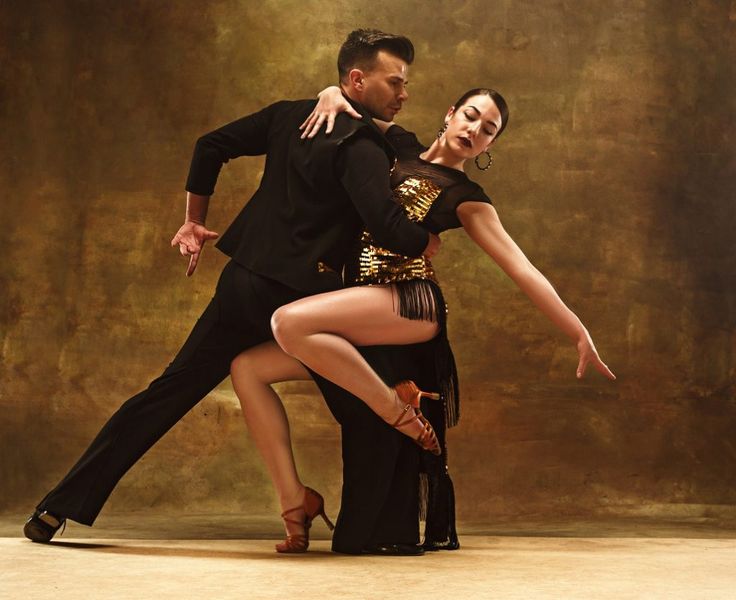
- Soulzouk
The Soulzouk or the freestyle zook has only recently appeared. A teacher from Brazil created it in China, but it still received the greatest distribution among Brazilians.
The peculiarity of the style is seen in the fact that it can be performed not only with traditional zouk music, but also with rap, R&B, hip-hop.
The movements of the dance have also undergone significant changes - it already uses not only the movements of the hips as leading ones, but includes the legs, shoulders and head.
- Neozouk
- Created by DJ Mafie Zouker. The music can shift from a traditional uninterrupted baseline, as in Zouk Lambada, to soft sounds and melodies or hard Industrial, ranging from traditional melodies from Brazil to remixes of popular music with an emotional tinge. All of these musical variations create space for the dancers to effectively express the accents and slow down the music. In Neo-Zouk, they usually dance in a circle, without breaking the connection of the hands, often the tools of the counterweight of the partners connected in movement are used to lead.
In Neo-Zouk, they usually dance in a circle, without breaking the connection of the hands, often the tools of the counterweight of the partners connected in movement are used to lead.
- Zouk-Flow
- smooth and consistent "flow" of impulses of the partner's arms and body into the movements of the partner's arms and body. That is, the partners "float" in the hands of each other.
- Brazilian Zouk
- It is especially spectacular and sensual.
Its basis is the movements of the hips that define the character of the dance and fill it with fire, and numerous turns and connections give the zouk its main stylistic feature - infinity.
Turns, approaches, movements of the body and arms. Smooth movements and rapid steps, all together it is fire and water - something that you can look at endlessly.
The influence of Latin American music contributes to the comparison of zouk with salsa, rumba or tango, but this impression is misleading: in latin the partner's hands lead the partner, in zouk her partner's hips lead her.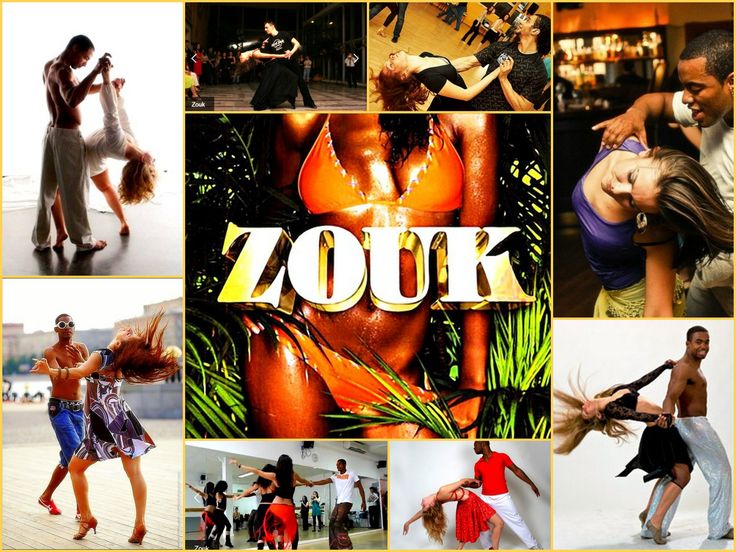
The most striking in dance are the expressive movements of the partner's head and neck. Loose hair focuses on the poses of the dancers, giving them entertainment.
Zuk dance is a sensual appeal and sexuality, the partners “swim” in each other's arms, hugging their hips. In addition, the dance is quite easy to master, based on movements that involve the transfer of weight from one leg to another.
Dancing types
Dances, Theater, Estheum in the districts
Interesting about dancing
9000
There are no reviews yet.
Write a review
Zouk.in.U What is Zouk? - Zouk.in.U
As long as there is humanity, there are as many dances. These are ritual dances in primitive tribes before hunting, and appeasement of evil spirits, and dances at the birth of a new person, and funeral dances, seeing off the soul to a better world, and dances calling for war with enemies . .. and much more.
.. and much more.
“…When do people sing? When they are having fun, they sing. They sing at demonstrations. They also sing when they are happy ”(c).
The same goes for DANCE. It is impossible to imagine humanity without dance.
There are different dances, those whose popularity is impenetrable, and there are those that have lost their popularity over time.
There are folk, ballroom, sports and social dances.
And everyone has their own "talents and admirers". Every person whose soul sings and wants to dance, among the abundance of dances, can choose the dance that is closest and in tune with himself, his attitude and perception, his mood. And how can one not remember Eliza Doolittle with her “I want to dance until the morning, I want to dance - my time has come!”
Or is it from the eighties: "Well, what makes you so drawn to dance?"
There are dances that seem to have always existed.
And there are dances that have appeared recently.
One of these recent dances is the extremely sensual dance ZOUK. He is the same age as the current young generation, he comes from the eighties, from their first half - from very recent history.
He is the same age as the current young generation, he comes from the eighties, from their first half - from very recent history.
Zouk music originated in the French Caribbean, Guadeloupe and Martinique. In the Creole language, the word "zouk" means a party, party, fireworks. Zouk music is a symbiosis of Haitian compa music, balacadry, pop music, Dominican music cadence and bal grandmont, antillean gwo ka, as well as mazurka and beguine.
The first popularizers of zouk in the Caribbean, and then in Latin America and around the world, was a musical group from Guadeloupe and Martinique "Kassav" (Kassav'). Its founders, the brothers George and Pierre-Edouard Décimus and Jacob Desvarieux, having polished and ennobled the carnival music of their homeland, added a little bit of salsa, soul vocals, reggae to it. The result was a zuk.
Zouk became famous for the concerts, which were spectacular theatrical costume performances with various impressive elements.
Zouk songs sing about passion, separation and love, although their lyrics are only available to those familiar with the Creole language and French mixed with the language of the local Negro population. But the main theme, I repeat, is love.
But the main theme, I repeat, is love.
Zouk is popular in Quebec, Canada, Brazil and the Dutch Antilles. In Europe, it became most popular in France. Zouk gained popularity in Asia as well. On the Cape Verde Islands (Cape Verde) developed its own special direction of zouk. The dance is also popular in Asia.
If we talk about zouk as a dance , then at the moment the following directions can be distinguished:
3. Brazilian ZUK
3.1 Classic Zuk
3.2 Lambazuk
3.3 Soul ZUK
3.4 Neo ZUK
3.5 ZUK FLOW
3.6 ZUK Revolution
One of the most popular species of Zuka - Brazilian Zuk. This is a style of dance derived from the lambada and performed to the rhythms of the zouk.
In the summer of 1989, the world hit parades were suddenly conquered by Kaoma's song "Lambada" (the text of which, by the way, was simply ... a plagiarism of the composition "Llorando se fué" by the Bolivian group Los Kjarkas J).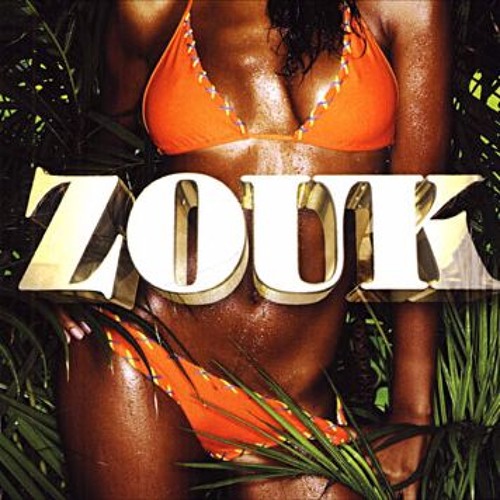 Music and dance, which until then were known only in Brazil, became popular all over the world. Lambada fever swept the whole world, the song came from everywhere: from irons to radios.
Music and dance, which until then were known only in Brazil, became popular all over the world. Lambada fever swept the whole world, the song came from everywhere: from irons to radios.
But nothing lasts forever under the moon, 4 years have passed and the popularity of the lambada began to decline. Music and dance were losing their ubiquity, and millions of fans around the world were helpless. Some dancers have begun to mix lambada with other musical styles in order to fully enjoy it before it fades into oblivion forever. As a result, they settled on the Franco-Caribbean zouk and kizomba.
Thus began the era of the zouk lambada, or simply lambazook.
Over time, lambazouk began to change and new directions began to appear, such as classic Brazilian zouk, neozouk, zoukflow, and now zouk can be danced to R'n'B, reggaeton, dancehall..
So.
Zouk-love (zuklav) is a variety of zouk, Haitian and French-Caribbean variant, which is considered one of the leading types of dance.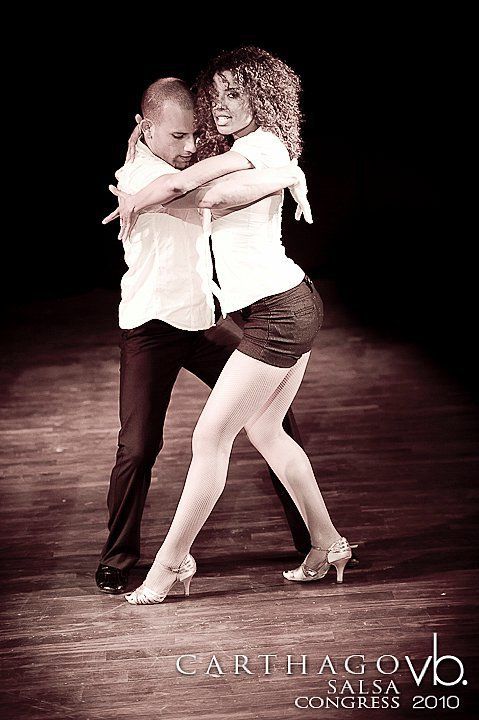 The pace of performance is slow, expresses lyrical and dramatic feelings of love and parting. Quite simple to perform, basic steps with the transfer of weight from one leg to another. Hip movements are light and smooth. It is characterized by the maximum proximity of partners during the dance and limited movement in space. Zouk-love is a club dance.
The pace of performance is slow, expresses lyrical and dramatic feelings of love and parting. Quite simple to perform, basic steps with the transfer of weight from one leg to another. Hip movements are light and smooth. It is characterized by the maximum proximity of partners during the dance and limited movement in space. Zouk-love is a club dance.
Kizomba (Kizomba) is a modern urban popular dance for couples, as well as a musical genre. Kizomba is a sensual, romantic, rather sexy dance. This dance originated as a mixture of the traditional Angolan semba and the Caribbean zouk. Due to the similarity of the rhythm, the musical style of kizomba is sometimes confused with the Brazilian zouk, however, unlike zouk, kizomba is less sweeping and energetic dance, as well as closer (partners almost do not increase the extremely close distance during the dance).
Styles of Brazilian Zouk:
In addition to the main styles of Brazilian Zouk ( Porto Seguro and Rio Style ) there are a number of less common and newer styles.
Rio Style - Also called Carioca Lambada or Rio Style Lambada. He was born in Rio de Janeiro, specifically on Ilha dos Pescadores around 1989. Mom and dad of this style are Adilio Porto and Renata Pesaña. Adilio came up with some basic steps of Rio style: he transformed the basic step from the basic step of Samba de gafiera, viraginha and lateral from bolero, mutual turns from jive.
Porto seguro style (lambazouk) is one of the most common Zouk styles and is often seen as an evolution of the original Lambada, although in its current form it is very different from the original. This style is characterized by energetic performance and a "joyful" mood. Although it is an energetic and rather fast style, the movements in it are smooth, continuous, and at the same time rhythmic. The dancers follow in a circle, "flowing" from one movement to the next.
Soulzouk (soulzouk ) - was created in 2005 in China by a teacher from Brazil.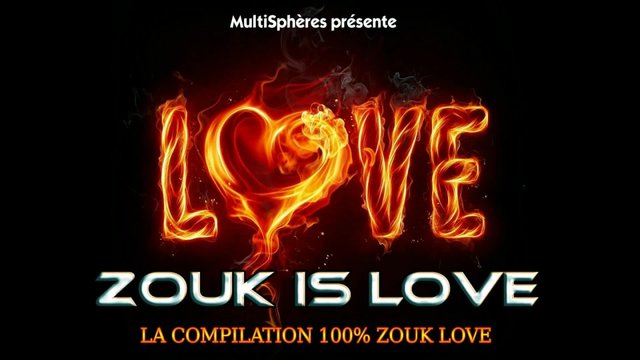 Soulzuk or zouk-FreeStyle is a new way to dance zouk. More modern, it differs from the traditional Brazilian zouk in a new way of connecting with the music. This type of dance can be performed not only to zouk music, but also to various musical genres such as hip-hop or R'n'B. Soulzuk introduced a lot of innovations to the dance such as the twist step and many others
Soulzuk or zouk-FreeStyle is a new way to dance zouk. More modern, it differs from the traditional Brazilian zouk in a new way of connecting with the music. This type of dance can be performed not only to zouk music, but also to various musical genres such as hip-hop or R'n'B. Soulzuk introduced a lot of innovations to the dance such as the twist step and many others
Neozouk was created and promoted by DJ Mafie Zouker. The music can shift from a traditional uninterrupted baseline, as in Zouk Lambada, to soft sounds and melodies or hard Industrial, ranging from traditional melodies from Brazil to remixes of popular music with an emotional tinge. All of these musical variations create space for the dancers to effectively express the accents and slow down the music. In Neo-Zouk, they usually dance in a circle, without breaking the connection of the hands, often the tools of the counterweight of the partners connected in movement are used to lead.
Zouk-Flow (zoukflow) - smooth and consistent "flow" of impulses of the partner's arms and body into the movements of the partner's arms and body.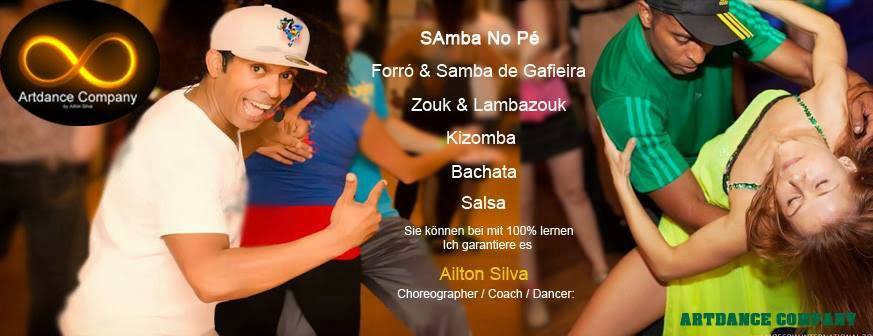 That is, the partners "float" in the hands of each other.
That is, the partners "float" in the hands of each other.
What is a zouk? This is a paired, rather playful and sexy dance. Unlike the Latin American salsa dance, it is characterized by the conduct of the dance due to the hands and strongly pressed hips of the partners. It is these basic movements that give the dance a zest, bring passion to it, distinguish it from other dances. Counting in zouk is simple: one step is performed on the first count, and two steps on the second. Steps and turns of the partner are accompanied by circular rotations of the head.
Zouk is danced in Brazil using modern, "rounded" and sensual lambada movements. In the basic step, when the partners move in different directions, the hips begin to move first, then the whole body follows them. This is what sensuality achieves. Girls are encouraged to have long hair, this gives the dance additional beauty. The dance is replete with beautiful curves of the body and wave movements, and the zouk music resembles the rhythm of a heartbeat. It should be noted that in the Brazilian zouk the flexibility of the girl is used by 100%. She has to bend in all directions, throw her head back, do head rolls, cambrai, and so on. Her movements resemble a trembling blade of grass in the wind. Numerous turns, beautiful hand movements, approaching and distancing partners from each other - all this is combined into an amazing composition, which is woven into either smooth transitions or rapid movements. As a result, the dance becomes simultaneously like a passionate flame of fire and an endless stream of water - two things that you can look at endlessly, two elements that are so different and similar to each other at the same time.
It should be noted that in the Brazilian zouk the flexibility of the girl is used by 100%. She has to bend in all directions, throw her head back, do head rolls, cambrai, and so on. Her movements resemble a trembling blade of grass in the wind. Numerous turns, beautiful hand movements, approaching and distancing partners from each other - all this is combined into an amazing composition, which is woven into either smooth transitions or rapid movements. As a result, the dance becomes simultaneously like a passionate flame of fire and an endless stream of water - two things that you can look at endlessly, two elements that are so different and similar to each other at the same time.
In September 2012, zouk was officially recognized by the United Kingdom Alliance of Professional Teachers of Dancing & Kindred Arts (UKA) and the International Dance Organization (IDO).
In January 2013, the first documentary film "Dance of Love" about the Brazilian Zouk was released and received a special prize from the jury of the California Film Awards Festival.


